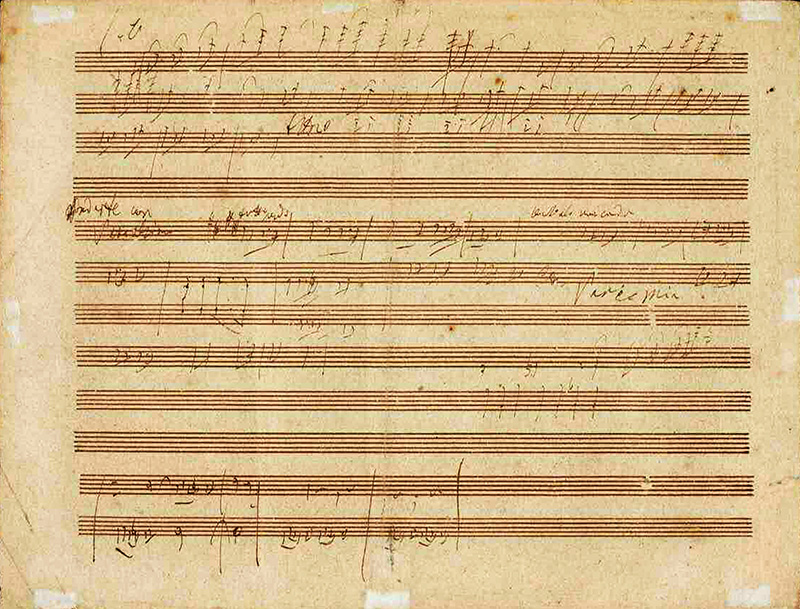Sound and Image—An Art Exhibition Dedicated to Ludwig van Beethoven

The fine autograph letter about Fidelio which will be exhibited is fine and rare. This handsome letter relates to one of Beethoven's greatest works, his only opera, Fidelio. Few letters survive from Beethoven's middle period (Anderson prints only ten from 1806, fewer than for any other year that decade) and those dealing with the first version of Fidelio (originally called "Leonore") are rare.
The autograph working manuscript of part of the full score of Opferlied Op.121B is the only surviving section of Beethoven's original autograph composition draft of his song for soprano, chorus and orchestra,containing substantial differences from the final published version. The manuscript contains nearly half this orchestral song ("Gesang"). This striking manuscript is written on large-format paper, with a considerable amount of sketching and re-working by the composer.
Autograph sketchleaf for the Piano Concerto No. 5, in E flat major ("Emperor"), Op.73 will also be exhibited, containing early ideas for all three movements. The "Emperor" Concerto is one of Beethoven's great iconoclastic works, a composition in which the composer reinvents the piano concerto, demolishing the older structure of the eighteenth-century form and paving the way for the celebrated Romantic concertos of Schumann, Liszt, Brahms and Tchaikovsky. With the appearance of the soloist after the stirring opening chord, Beethoven announces his unmistakable intention to make the piano an equal protagonist with the orchestra in the unfolding musical drama. In the "Emperor", he introduces the solo piano in stark opposition to the orchestra by giving it a titanic flurry of arpeggios in alternation with thunderous chords from the orchestra.
Sound and Image—An Art Exhibition Dedicated to Ludwig van Beethoven
Date: 10.18-12.18
Venue: No.1 Art Museum
